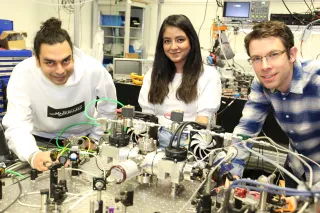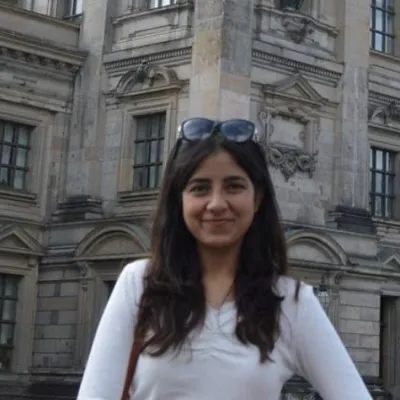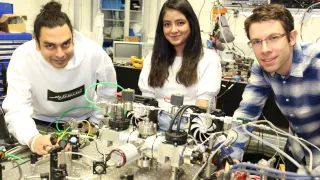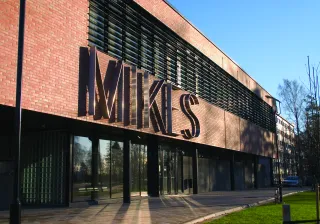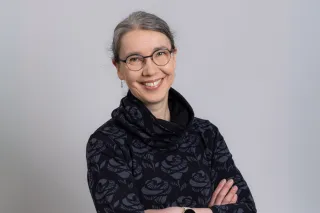Global warming requires fast action to reduce emissions, and a transition from fossil to biogenic carbon. However, there are no effective methods to differentiate between these carbon sources. BioAuthenticator project, part of VTT's iBEX innovation programme, aims to solve this by detecting radiocarbon.
Fossil carbon extracted from million-year-old reservoirs adds up to the carbon dioxide content in the atmosphere, while biogenic carbon does not. This is why we need to switch from fossil to biogenic carbon. But that is unlikely to happen if we cannot tell the difference between them. VTT’s BioAuthenticator team is developing a solution to this problem.
“Fossil and biogenic carbon is now all mixed up in the carbon cycle. If we can separate them, we can take measures to reduce the amount of fossil carbon. This would be useful for carbon taxation and authorizations, as you can only control what you can measure”, says Mehr Fatima, leader of the BioAuthenticator team.
Detecting radiocarbon by laser spectroscopy
A particular isotope of carbon, radiocarbon, could help to track down the source of carbon dioxide. Biogenic carbon has the atmospheric concentration of radiocarbon, while in fossil carbon it is zero. VTT’s BioAuthenticator team is developing a new instrument for detecting radiocarbon, based on sensitive laser spectroscopy.
The method used in the solution is based on cavity enhanced laser spectroscopy for radiocarbon detection. The idea is to place the carbon dioxide sample into an optical cavity that traps laser light for a long time. When the laser light leaks out of the cell, it carries the amount of radiocarbon in the sample. This reveals the proportion of fossil and biogenic carbon.
The project relies on VTT’s strong expertise on radiocarbon detection and optical spectroscopy, built during 5-10 years of research in these areas. In addition, the solution requires expertise on metrology and computational dynamics, as well as knowledge about carbon taxation and trading.
Target sensitivity of 1 part per trillion
The challenge for measuring radiocarbon is that the amount of this isotope in biogenic carbon is very small – about 1 drop in 1 000 billion drops. This requires extremely sensitive measuring.
“Our target sensitivity is 1 ppt ± 0,1 ppt. Within the VTT iBEX programme, we have improved our system and reached a sensitivity level of 3,6 ppt. This is a good result, but we must improve it further”, Fatima mentions.
“We have an understanding of the potential of this technology, and we are now approaching the required level of sensitivity. We are confident that we can build this device and we estimate to reach our target level within 1-2 years”, says Thomas Hausmaninger, expert on laser spectroscopy supervising the project.
Compact size, real-time measuring and better temperature control
There are some competing solutions in the market for differentiating between fossil and biogenic carbon. BioAuthenticator’s device compares well with the alternatives because the tabletop size device is compact, and the method is easy to use.
“The competing solutions cannot differentiate fossil and biogenic carbon in real time. They are not very simple to use and need time for preparation. With our setup, we will be able to measure the carbon in real time”, Fatima points out.
BioAuthenticator team continues to develop the design of the device. This includes sensitivity improvements, temperature control and applying most sensitive laser spectroscopy techniques.
“Measurements are ideally done at temperatures of -20 to -30 degrees Celsius. We have been able to optimize the system and achieve effective cooling and better temperature control. This improves the reliability of the system”, Fatima says.
Market potential in carbon trading and capture
The BioAuthenticator team has studied the market during the VTT iBEX programme and gained a lot of knowledge about the market needs. Their solution could be used by the authorities regulating the carbon emissions as well as the companies utilizing carbon in their products.
For example, energy companies have shown interest in the solution and given valuable feedback for its development. The companies capturing carbon would also benefit from the solution, as it would allow them to prove the use of biogenic carbon. The BioAuthenticator team continues discussions with different companies and industries.
“The long-term vision of the world is to become carbon negative. This requires new solutions for carbon capture, storage and utilization. Ideally, all the carbon dioxide should come from the atmosphere. This is a huge market, affected by changing regulation. We definitely need a way to measure fossil and biogenic carbon to enable this transition”, Hausmaninger concludes.
The European waste incinerators, for example, emit 40 million tons of carbon dioxide every year. Some countries, such as Sweden and Denmark, require waste incinerators to tell how much fossil and biogenic carbon dioxide they emit. This is estimated based on the incoming streamlines, but without proper measurement there is no tax benefit for using biomaterials. This slows down the transition.
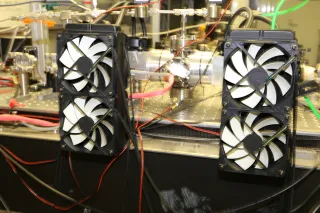
BioAuthenticator team members are Research Scientist and Team Lead Mehr Fatima (laser spectroscopy and photonics), Research Scientist Thomas Hausmaninger (laser spectroscopy), Principal Scientist Eemeli Tsupari (carbon capture, storage and trading), Senior Scientist Shahin Tabandeh (metrology and computational dynamics) and Research Team Leader Guillaume Genoud (optical spectroscopy).
